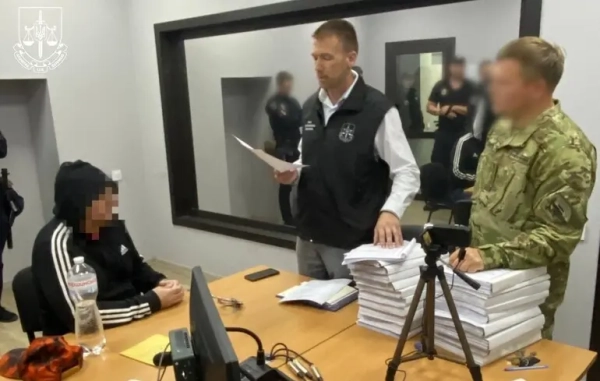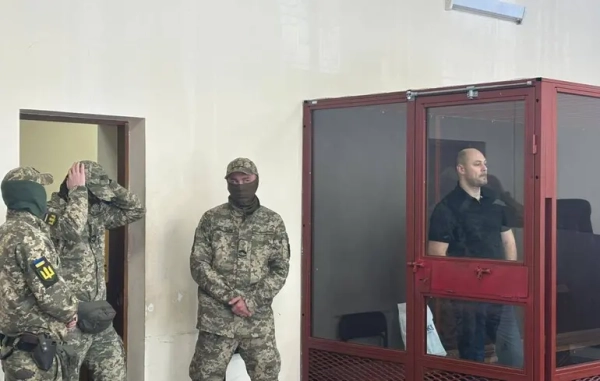
The Supreme Court dealt a major blow to President Donald Trump’s efforts to crack down on sanctuary policies on Monday when it refused to take up a case challenging a California law that prevented local law enforcement from cooperating with federal immigration authorities.
The refusal means the California Values Act, which prevents state and local law enforcement from sharing immigrants’ personal information with immigration authorities and transferring them to immigration custody, will continue to be in force. Only Justices Samuel Alito and Clarence Thomas wanted to review the case.
While the Trump administration has successfully defended its restrictive immigration policies in court before, its attacks on sanctuary states and cities — which do not allow local law enforcement to share information with US Immigration and Customs Enforcement or hand over immigrants in their custody — have consistently faced setbacks.
The Trump administration had challenged the Values Act in court, along with two other California sanctuary state laws, on the basis that they interfered with the enforcement of federal immigration laws. But lower courts largely upheld the three laws, only striking down a key provision that imposed fines on private employers who voluntarily allow immigration authorities onto their worksites. Courts have also barred the administration from withholding federal law enforcement grants from sanctuary states.
Even though the Supreme Court decided to leave the California laws in place, however, ICE is still carrying out enforcement activities in the state, which is particularly harmful amid the coronavirus pandemic, Almas Sayeed, deputy director of programs at the California Immigrant Policy Center, said in a statement Monday.
“Despite California’s strong clap back against federal immigration enforcement, ICE continues to wreak havoc on immigrant communities through arrest, deportation and removals,” he said. “We continue to call on Governor [Gavin] Newsom to end ICE transfers.”
How California’s sanctuary laws protect immigrants from ICE
The Trump administration had asked the Supreme Court in October to review two provisions of the Values Act in particular. One prevented state and local law enforcement officials, except for those who work in correctional facilities, from providing information about detainees’ release dates or home addresses to US Immigration and Customs Enforcement unless it’s already public information. That information had previously allowed ICE to track down and detain immigrants upon their release from state or local law enforcement custody, which in many cases led to their deportation.
The other provision prevented immigrants who have not been convicted of a crime from being transferred to immigration custody absent a court order, with some exceptions. In the past, law enforcement officials could directly hand over any detainees suspected of immigration violations to ICE.
The Values Act also prevented police and sheriffs from inquiring about anyone’s immigration status, arresting people only for immigration violations and holding immigrants in jail longer just so that immigration agents can take them into custody.
The other two laws challenged by the Trump administration, AB 450 and AB 103, require employers to give notice of immigration inspections to their workers and labor unions and mandate regular reports on conditions inside immigration detention facilities. The first of those reports, released in February 2019, found that immigrants were held in their cells for up to 22 hours a day, that they faced language barriers, had limited access to medical and mental health care and had difficulty accessing attorneys.
Trump has been targeting sanctuary cities
It’s not the first time that the administration has targeted sanctuary cities for refusing to cooperate with federal immigration authorities. The administration has recently blocked New Yorkers from enrolling in Global Entry and other programs that offer faster processing for vetted travelers in response to new state sanctuary laws. It also sent armed and highly trained law enforcement units to sanctuary cities across the country in February to support ICE in carrying out immigration raids.
At his State of the Union address earlier this year, Trump characterized sanctuary cities as a danger to public safety and broadly painted immigrants as violent criminals, highlighting a case of an immigrant arrested on charges of murdering and sexually assaulting a 92-year-old woman in New York City.
Trump has done this over and over during his time in office, turning his ire on international criminal gangs like MS-13 and invoking the stories of “angel moms,” parents of those killed by gang members.
But in reality, research suggests that his characterization doesn’t hold water: Sanctuary policies don’t appear to make a city more dangerous. While there isn’t a huge body of research on sanctuary policies’ impact on crime rates, studies have found that they either slightly decrease crime rates or have no effect.
A study published in the journal Urban Affairs Review in 2017 found that cities with similar characteristics but for their sanctuary policies had “no statistically discernible difference” in their rates of violent crime, rape, or property crime. Using data from the National Immigration Law Center and the FBI, researchers compared crime rates before and after cities passed sanctuary laws, finding that they had no effect on crime.
Another study by the Center for American Progress, a left-leaning think tank, examined the almost 2,500 counties that don’t accept requests from US Immigration and Customs Enforcement to detain unauthorized immigrants. The study found that counties with sanctuary policies tend to have lower crime rates than those that don’t: about 35.5 fewer crimes per 10,000 people on average. The counties with the smallest populations exhibited even bigger differences in crime rates.
Many police chiefs say there’s good reason behind those results: Sanctuary policies facilitate better crime reporting and cooperation with law enforcement in criminal investigations.
Support Vox’s explanatory journalism
Every day at Vox, we aim to answer your most important questions and provide you, and our audience around the world, with information that has the power to save lives. Our mission has never been more vital than it is in this moment: to empower you through understanding. Vox’s work is reaching more people than ever, but our distinctive brand of explanatory journalism takes resources — particularly during a pandemic and an economic downturn. Your financial contribution will not constitute a donation, but it will enable our staff to continue to offer free articles, videos, and podcasts at the quality and volume that this moment requires. Please consider making a contribution to Vox today.
Sourse: vox.com






